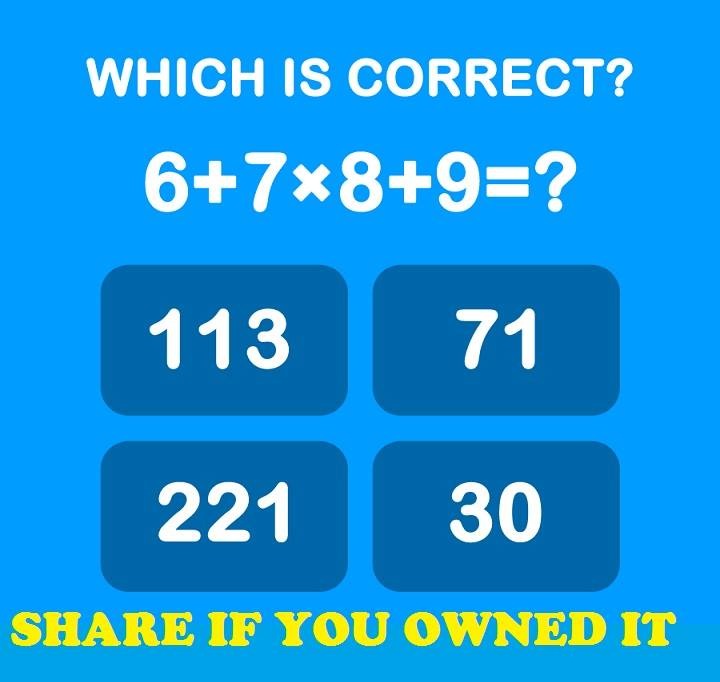First Impressions: A Simple Equation
At first glance, the equation 6 + 7 x 8 + 9 might seem straightforward. Many might rush to add and multiply the numbers in the order they see them. But here’s where math can get tricky—order matters, and following the correct order of operations is key.

Order of Operations: PEMDAS to the Rescue
To solve this puzzle correctly, we need to remember the order of operations, often remembered by the acronym PEMDAS:
- Parentheses
- Exponents
- Multiplication and Division (from left to right)
- Addition and Subtraction (from left to right)
So, let’s apply PEMDAS to our equation.
Step-by-Step Solution: Applying PEMDAS
Step 1: Identify Operations
First, we identify the operations in the equation: addition and multiplication. According to PEMDAS, multiplication comes before addition.
Step 2: Perform Multiplication First
We start by performing the multiplication: 7×8=567 \times 8 = 567×8=56
Step 3: Substitute Back Into the Equation
Now, substitute 56 back into the original equation: 6+56+96 + 56 + 96+56+9
Step 4: Perform the Addition
Next, we perform the addition from left to right: 6+56=626 + 56 = 626+56=62 62+9=7162 + 9 = 7162+9=71
Final Answer: 71
So, the correct answer to the puzzle is 71.
Common Mistakes: Why People Get It Wrong
Misunderstanding the Order of Operations
One of the most common mistakes people make is ignoring the order of operations. It’s easy to get caught up in the excitement of solving the puzzle and rush through the steps, but doing so can lead to incorrect answers.
Adding Before Multiplying
Another frequent error is adding the numbers as they appear before performing the multiplication. This mistake leads to a completely different result: 6+7=136 + 7 = 136+7=13 13×8=10413 \times 8 = 10413×8=104 104+9=113104 + 9 = 113104+9=113
Clearly, this approach doesn’t follow PEMDAS, and the result is far from correct.
The Importance of Critical Thinking in Math
Why Order Matters
Math isn’t just about getting to the answer—it’s about understanding the process. Following the correct order of operations ensures that equations are solved consistently and accurately. This principle applies not only to simple equations but to complex mathematical problems as well.
Building Problem-Solving Skills
Solving puzzles like this one helps build critical thinking and problem-solving skills. It trains your brain to approach problems methodically and to consider each step carefully before moving on to the next. These skills are valuable not just in math, but in everyday life.
Why Math Puzzles Are So Popular
The Thrill of the Challenge
There’s something inherently satisfying about solving a puzzle. It’s a test of your skills, a challenge to your intellect, and when you finally crack it, the sense of accomplishment is huge. That’s why math puzzles continue to be popular—they’re fun, engaging, and mentally stimulating.
Social Sharing and Competition
In today’s digital age, math puzzles like this one often go viral on social media. People love to share these challenges with friends and family, creating a sense of competition. Who can solve it the fastest? Who gets it right on the first try? This social aspect adds an extra layer of enjoyment to the puzzle-solving experience.
Conclusion: The Power of a Simple Puzzle
Math puzzles may seem simple, but they can pack a punch when it comes to testing your skills and keeping your brain sharp. The next time you come across a puzzle like 6 + 7 x 8 + 9, remember to take a deep breath, apply the order of operations, and enjoy the process of finding the solution. Whether you solve it instantly or take a few tries, the journey to the answer is just as rewarding as the answer itself. So, are you ready to tackle your next math challenge? Keep practicing, and remember—math is as much about the process as it is about the solution.






